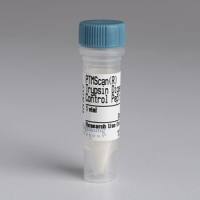Light sensitivity in the vertebrate retina is mediated by the opsin visual pigments inside rod and cone photoreceptor cells.
These pigments consist of a G protein-coupled receptor and the photo-sensitive ligand, 11-cis
-retinaldehyde (11-cis-
RAL). Absorption of a photon by an opsin pigment induces isomerization of the 11-cis-
RAL chromophore to all-trans-
retinaldehyde (all-trans-
RAL), rendering the pigment insensitive to light. The bleached opsin regains light sensitivity by recombining with another
11-cis-
RAL. The vertebrate eye contains a biochemical mechanism for regenerating 11-cis-
RAL chromophore from all-trans-
RAL, called the visual cycle. The visual cycle takes place within cells of the retinal pigment epithelium (RPE). A second
visual cycle also appears to be present in M�ller glial cells of the retina. A critical step in the regeneration of 11-cis-
RAL chromophore is thermal re-isomerization to the 11-cis
configuration of an all-trans-
retinyl ester (all-trans-
RE) or an all-trans-
retinol (all-trans-
ROL). In RPE cells, this step is carried out by an enzyme called Rpe65 isomerase. This chapter provides methods for assaying
Rpe65 isomerase. Although Rpe65 utilizes an all-trans-
RE such as all-trans-
retinyl palmitate (all-trans-
RP) as substrate, it can be assayed in RPE homogenates by providing all-trans-
ROL substrate and allowing the endogenous lecithin:retinol acyl transferase (LRAT) to synthesize all-trans-
REs using fatty acids from phosphatidylcholine in the membranes. Alternatively, all-trans-
RP can be provided directly as substrate, although this requires the isomerase reaction to be carried out in the presence
of detergent, since fatty-acyl esters of all-trans-
ROL are insoluble. Methods are provided in this chapter for assaying Rpe65 in RPE homogenates with both all-trans-
ROL and all-trans-
RP substrates. A second visual cycle appears to be present in the retinas of cone-dominant species such as chicken. This retinal
pathway may augment the RPE to provide 11-cis-
RAL to cone photoreceptors under conditions of bright light where the rate of opsin photoisomerization is high. The isomerase
in this pathway (isomerase-2) utilizes all-trans-
ROL and palmitoyl coenzyme A (palm CoA) as substrates to synthesize 11-cis-
retinyl palmitate (11-cis-
RP). Isomerase-2 appears to be present in M�ller cells but has not yet been identified. Methods are provided in this chapter
for assaying isomerase-2 in chicken retina homogenates.


![AOC2/AOC2蛋白Recombinant Human Retina-specific copper amine oxidase (AOC2)重组蛋白Amine oxidase [copper-containing] (Semicarbazide-sensitive amine oxidase) (SSAO)蛋白](https://img1.dxycdn.com/p/s14/2024/0914/386/8235194321829384381.jpg!wh200)



